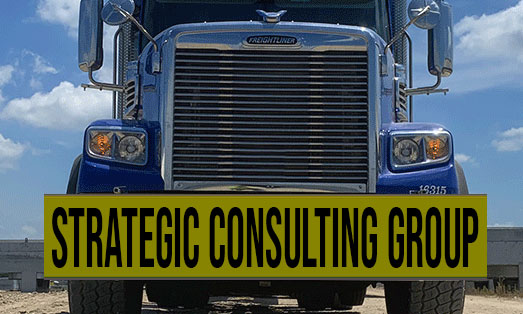Risk Mitigation: Implementing strategies to minimize project risks., Addressing Emergencies, West Wendover, etc.
Addressing Emergencies, etc
Building a Fortress Against Project Storms: Mastering Risk Mitigation
Picture this: You’ve meticulously crafted a beautiful sandcastle, a masterpiece of planning and effort. But a rogue wave could easily crumble it all in seconds. Your projects are no different. Unforeseen challenges – the “storms” of project management – can arise and derail even the best-laid plans. But fear not! Just like a strong wall protects your sandcastle, effective risk mitigation strategies can safeguard your projects against these unexpected threats.
Step 1: Unveiling the Hidden Dangers
The first step towards building this protective wall is identifying all potential risks lurking within your project. Imagine yourself as a detective, meticulously examining every aspect, from potential resource shortages to unforeseen regulatory changes. This thorough analysis will reveal the vulnerabilities you need to address.
Step 2: Crafting Your Fortress
Now, armed with this knowledge, you’re ready to develop a robust Risk Response Plan. This plan is your fortress, a strategic guide to tackling each identified risk head-on.
Here’s where it gets interesting:
- Avoidance: Can you completely bypass a risk by adjusting your project plan? For example, if you foresee supply chain disruptions, could you switch to a different vendor with a more reliable track record? This proactive approach eliminates the threat entirely.
- Acceptance: Sometimes, a risk may be too small to warrant significant effort. In such cases, accepting the risk and moving forward might be the best strategy. This is like choosing to build your sandcastle further from the water’s edge, accepting the possibility of a small wave splashing in, but not jeopardizing the entire structure.
By implementing this two-pronged approach, you’ll be equipped to navigate the stormy seas of project management with confidence. Your projects will stand strong, ready to weather any challenges that come their way.
Project Problems? Learn to Stay Ahead of the Game with Risk Mitigation!
TL;DR: Risk mitigation is like having a plan to deal with problems before they happen in your project. It’s about thinking ahead, making smart choices, and having backup plans so you can keep your project moving smoothly.
Why is Risk Mitigation Important?
Imagine you’re building a sandcastle on the beach. If you don’t think about the waves, your castle could easily be washed away! Risk mitigation is like building a strong wall around your sandcastle to protect it. It’s all about preventing problems and keeping your project on track.
Types of Risks
Risks can be like different types of weather. You might have:
-
External Risks: These are things outside your control, like a sudden storm. Examples in projects include:
- Economic Downturn: The economy gets worse, and your funding gets cut.
- Natural Disaster: An earthquake or flood damages your work.
- Changes in Laws: The rules change and you need to adjust your project.
-
Internal Risks: These are things within your control, like forgetting an important tool. Examples include:
- Lack of Skills: The team doesn’t have the skills needed to complete the project.
- Poor Communication: Team members aren’t talking to each other effectively.
- Unrealistic Timelines: The project deadline is too soon, and the team can’t finish on time.
Risk Mitigation Strategies
Now that you know what risks to watch out for, how do you handle them? Here are some powerful strategies:
1. Identify and Analyze Risks:
The first step is to identify all the potential problems in your project. Think about:
- What could go wrong?
- How likely is it to happen?
- What would be the impact if it did happen?
You can even use a checklist to help you brainstorm!
2. Develop a Risk Response Plan:
Once you know what risks to watch out for, it’s time to make a plan! This plan should include:
- Avoidance: Can you change your project plan to avoid the risk altogether?
- Mitigation: Can you reduce the likelihood or impact of the risk?
- Transfer: Can you pass the risk onto someone else, like buying insurance?
- Acceptance: If the risk is too small to worry about, you can accept it and move on.
3. Monitor and Control:
Even with a plan, things can still go wrong! That’s why it’s important to keep an eye on your project and watch for any signs of trouble. Make sure you:
- Track Progress: Are you on schedule?
- Communicate Clearly: Is everyone on the team aware of potential risks?
- Be Flexible: Are you ready to adapt your plan if things change?
Example of Risk Mitigation in Action
Let’s say you’re planning a school play. One risk is that the actors might get sick and miss the performance. Here’s how you could mitigate that risk:
- Avoidance: You could have backup actors ready to step in if needed.
- Mitigation: You could encourage everyone to wash their hands and stay healthy.
- Transfer: You could purchase insurance to cover any costs if the play needs to be postponed.
- Acceptance: You could accept the risk and hope no one gets sick!
Putting it All Together
Risk mitigation is a powerful tool for keeping your projects on track. By identifying risks, developing a plan, and staying vigilant, you can reduce the chances of unexpected problems.
Remember: Just like a strong wall protects your sandcastle, good risk mitigation strategies can protect your projects from the unexpected storms that life throws your way!
More on Risk Mitigation: Implementing strategies to minimize project risks.…
- ## SEO Keywords: Risk Mitigation & Emergency Response
- Risk Mitigation:
- Risk mitigation strategies
- Project risk management
- Minimize project risks
- Risk assessment and mitigation
- Risk analysis and control
- Risk management plan
- Risk mitigation techniques
- Proactive risk management
- Risk identification and response
- Risk mitigation best practices
- Implementing risk mitigation
- Risk register
- Risk tolerance
- Contingency planning
- Risk management software
- Risk mitigation tools
- Risk mitigation training
- Risk mitigation consulting
- Risk mitigation for projects
- Risk mitigation in construction
- Risk mitigation in software development
- Risk mitigation in finance
- Risk mitigation in healthcare
- Risk mitigation in education
- Addressing Emergencies:
- Emergency preparedness
- Emergency response planning
- Emergency management
- Crisis management
- Disaster recovery
- Business continuity planning
- Emergency communication
- Emergency response team
- Emergency procedures
- Emergency drills
- Emergency supplies
- Emergency contact information
- Emergency preparedness training
- Emergency management software
- Emergency management consulting
- Emergency response services
- Natural disaster preparedness
- Active shooter preparedness
- Cybersecurity incident response
- Pandemic preparedness
- Combined Keywords:
- Risk mitigation and emergency response
- Emergency preparedness for projects
- Risk mitigation in emergency situations
- Integrating risk mitigation and emergency response
- Emergency management best practices for risk mitigation
- Risk mitigation for disaster recovery
- Crisis management strategies for risk mitigation
- Business continuity planning for risk mitigation
- Emergency preparedness and risk management
- Risk assessment and mitigation for emergency situations
- Emergency response planning and risk mitigation
- Risk management tools for emergency preparedness
- Emergency communication and risk mitigation
- Emergency response training and risk mitigation
- Risk mitigation and emergency response consulting
- Long-Tail Keywords:
- How to implement risk mitigation strategies for project success
- Best practices for risk assessment and mitigation in project management
- Effective risk mitigation techniques for construction projects
- Risk management software for emergency preparedness and response
- Emergency response planning for natural disasters and other crises
- Training programs for effective emergency management and risk mitigation
- Developing a comprehensive emergency response plan for your organization
- Building a robust business continuity plan for risk mitigation and disaster recovery
- The importance of proactive risk mitigation for preventing project delays and cost overruns
- Strategies for managing risk and responding to emergencies in healthcare settings
- Best practices for crisis communication during emergencies and risk mitigation initiatives


